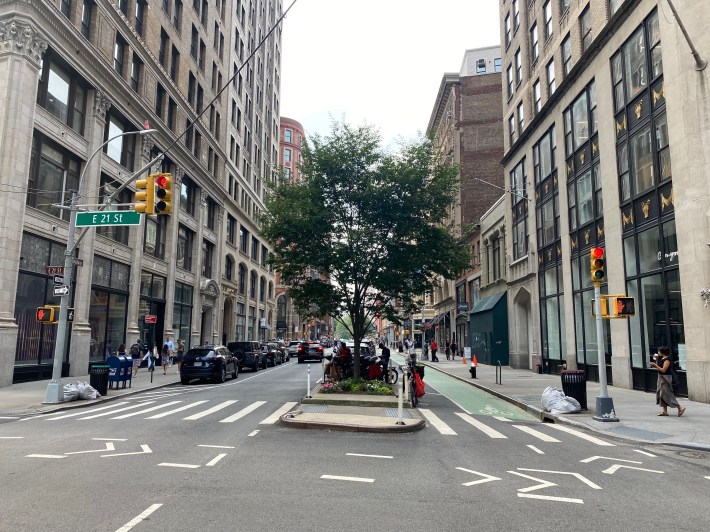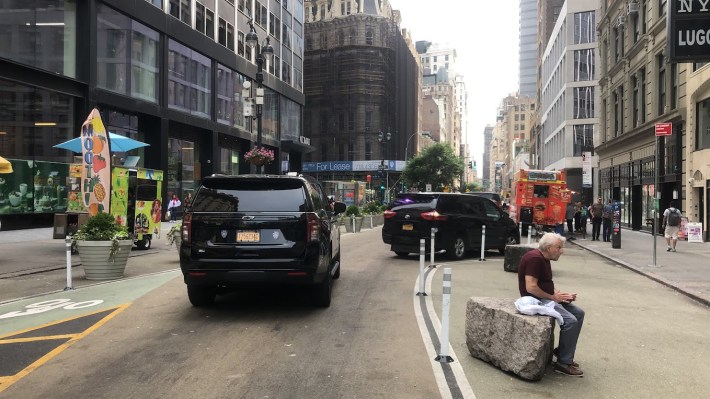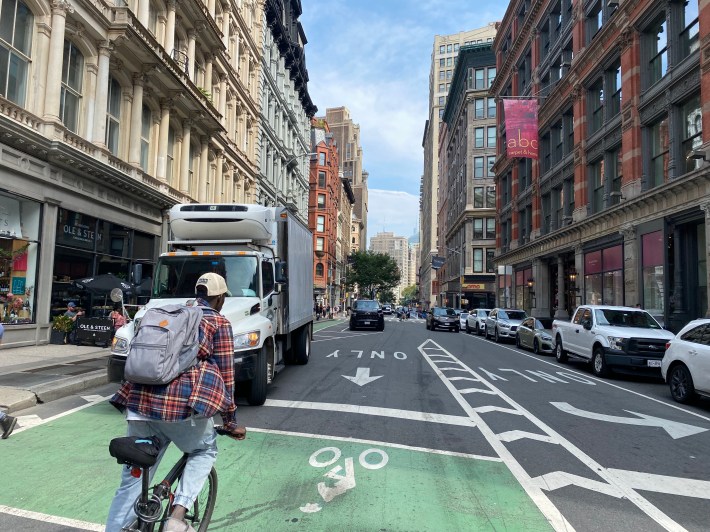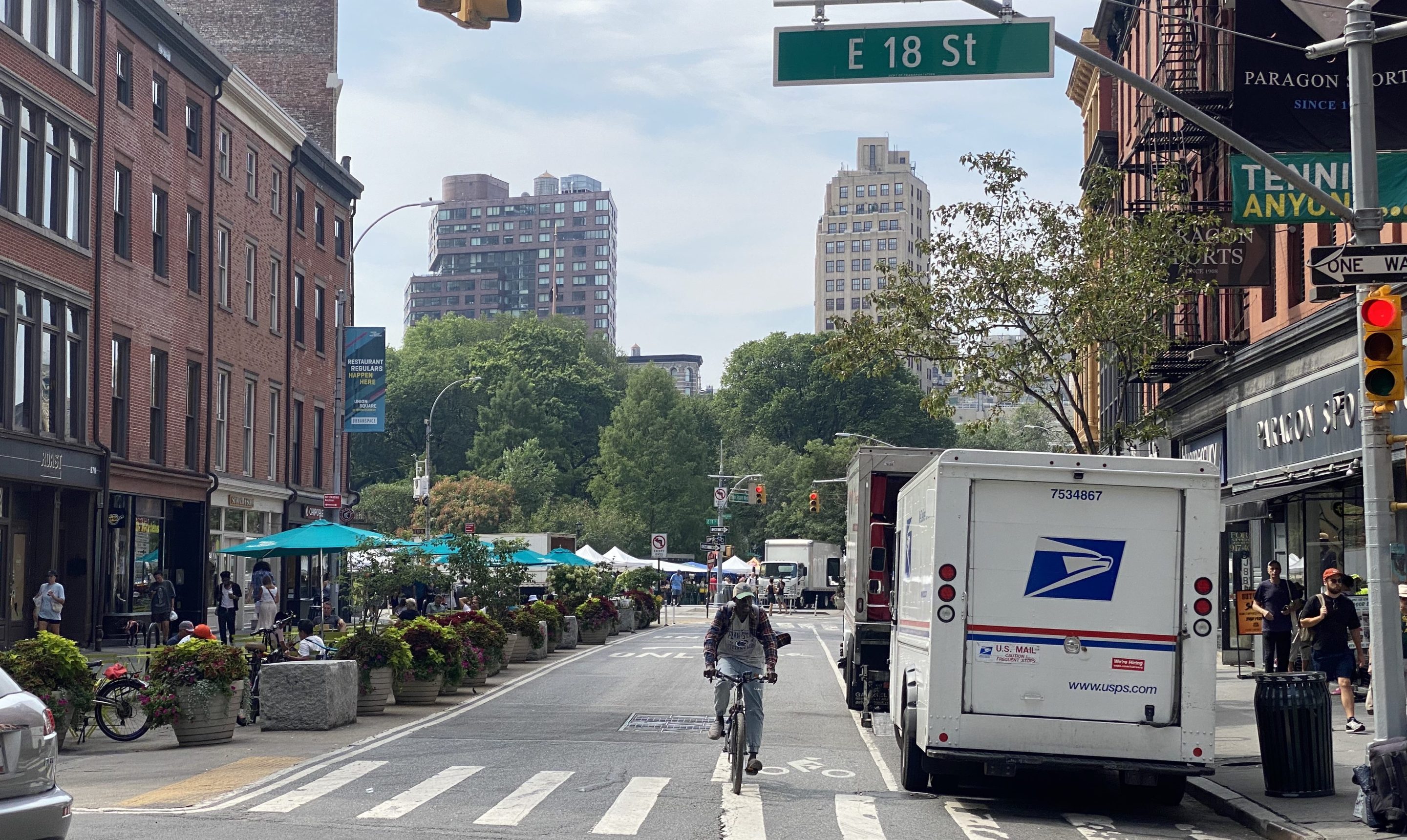The city is considering installing a two-way bike boulevard on four blocks of Broadway north of Union Square, as part of its “Broadway Vision” project to make the landmark thoroughfare more bike- and pedestrian-friendly all the way to Columbus Circle, officials said on Monday.
The Department of Transportation began gathering public feedback for "the possibility of a new two-way bike boulevard" on Broadway, between E. 21st and E. 17th streets, which is slated to get a revamp next year, City Hall said in a statement.
"Broadway Vision is more than a project — it’s a new way of looking at how this iconic street can serve New Yorkers and support our city’s comeback," added Mayor Adams in the same statement.

Advocates cheered the Adams administration for forging ahead on the nearly decade-and-a-half initiative to overhaul the city's most famous street, but urged Hizzoner to fully close the southern stretch to cars.
"Our hope is that they’ll do full pedestrianization and not kind of a half-measure," said Katherine Nessel, who co-leads the Broadway Linear Park campaign at Transportation Alternatives. "If cars can only drive down four blocks, then why not make it fully pedestrianized?"
Bike boulevards are corridors designed to prioritize bicycle travel with narrower driving lanes, chicanes, traffic-direction diverters, plus more bike and pedestrian space. Drivers can still access all of the roadway, but they must reduce their speeds and sometimes need to approach some blocks from a different direction.
The agency started rolling out these types of redesigns on pandemic-era open streets like 39th Avenue in Queens, along with Underhill Avenue and Berry Street in Brooklyn.
As part of Broadway vision, the city moved forward with some plazas that bar cars, plus other spaces that still allow automobiles, albeit at slower speeds.
Most recently DOT added two plazas and two-way bike boulevards between W. 32nd and W. 25th street this spring.
Advocates have long pushed for a full pedestrianization of the old Native American trail that meanders through Manhattan’s grid, especially after a cab driver slammed into a cyclist and three pedestrians a year ago near W. 29th Street.
Nessel said the city's recently installed plazas on the two blocks between W. 25th and W. 27th were great, but added that the shared car and bike design on the sections north of that — including at last year's crash site — still enabled drivers to get in the way of the two-way bike traffic there.
"The space is kind of designed where no one really feels like they have agency over the space," she said.
That's despite automobiles making up just one percent of traffic, according to a recent count by the advocates between 32nd and 31st streets and from 4-5 p.m. in June.

The stretch slated for the next upgrade currently has a southbound parking-protected bike lane between 21st and 18th streets, which devolves into an unprotected bike lane for the southernmost block connecting to Union Square.
Locals said the sections near the square are already a safe place to ride due to low volumes of car traffic, but Streetsblog also observed cyclists routinely riding against traffic on the existing bike lanes.
“You see it, it’s not really too good,” said Jammar Brown as he locked up his e-bike and watched other cyclists going the wrong way.

Generally, residents welcomed the extra space for cyclists and pedestrians.
“Bike friendly is always great, as long as it doesn’t create traffic around,” said Alisa C., who lives nearby. “I bike here often. I rarely see any cars here. … This is the safest street to block.”
The plans to reclaim space from cars on Broadway date back to the Bloomberg administration in 2009, and in more recent years DOT has worked with business improvement districts to add more pedestrian spaces, outdoor dining, and bike lanes around Times Square, Herald Square, and Madison Square Park.
Please join us today 8/21, Wednesday 8/23, and Friday 8/25, to share your feedback about the next phase of Broadway Vision, which includes safety improvements on Broadway from 17th St to 21st St.
— NYC DOT (@NYC_DOT) August 21, 2023
Can't make it? Fill out the survey: https://t.co/8mhm3iFcA3 pic.twitter.com/gnvGbAcZ21
DOT will hold two more outreach sessions this week, and plans to hold more in the coming months:
- Wednesday, Aug. 23, noon–6 p.m.: Union Square Greenmarket
- Friday, Aug. 25, 11 a.m.–5 p.m.: Broadway at East 17th Street






